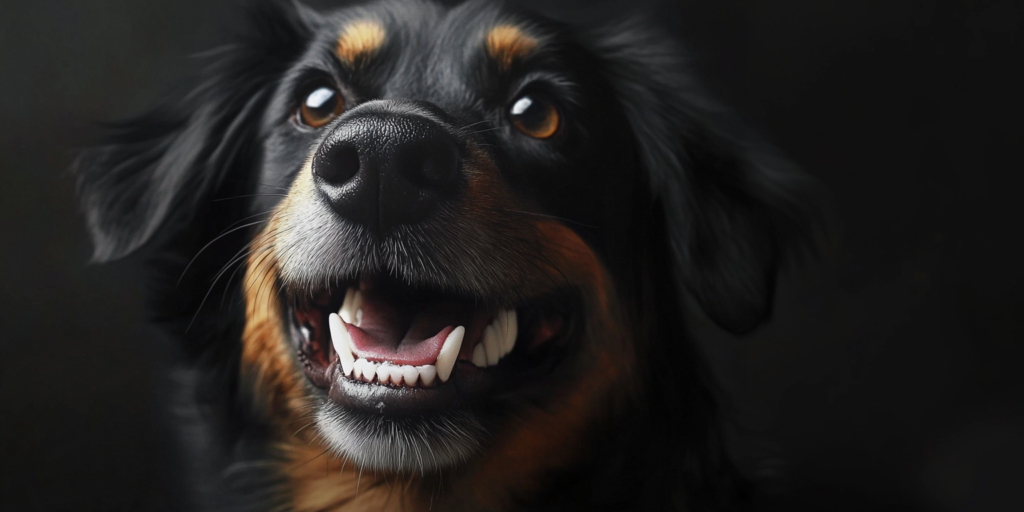How to Improve Dental Health in Dogs
 Cecilie Hemsen Berg
Cecilie Hemsen Berg
Did you know that over 80% of dogs show signs of dental disease by the age of three? Just like other parts of the body, the mouth and teeth are affected by age and general wear and tear. Factors such as anatomy, the immune system, nutrition, brushing, genetic disposition and accidents can all affect oral and dental health in different ways.
In the last decade, dental care for dogs has greatly improved. What used to be occasional tooth extractions has now become routine annual dental exams and cleanings. Preventive care is more accessible, and we now know that a dog’s oral health is closely linked to their overall well-being. As pets live longer due to better nutrition, healthcare, and lifestyles, taking care of their teeth is more important than ever. Regular care can prevent tooth pain and loss and also protect against serious health problems that can affect their organs and overall lifespan.

Let’s Start by Debunking Some Dental Health Myths:
- Myth 1: Bad breath is normal for dogs.
- Fact: Once considered merely an inconvenience for dog parents, bad breath is now recognised as a valuable diagnostic tool for veterinarians in identifying potential health issues. It can be a sign of dental disease, but also diabetes, kidney disease, liver disease and oral tumours to mention a few.
- Myth 2: Dogs naturally clean their teeth by chewing.
- Fact: Chewing can help, but it is not a substitute for regular brushing and professional cleanings.

- Myth 3: Dental disease only affects older dogs.
- Fact: Dental disease can affect dogs of any age and by the age of 3 most dogs show signs of dental disease. One reason dog parents may not recognize the problem is that dogs are notoriously good at hiding their pain for as long as possible.
Common Dental Issues in Dogs
It is estimated that more than two-thirds of dogs over three years old suffer from some degree of gum disease. This makes it the most common disease affecting dogs. Tooth decay on the other hand is not very common, representing only 10% of all dental problems.
Plaque, tartar and gum inflammation/gingivitis
These are common dental issues. It starts with plaque buildup containing bacteria and food particles. Plaque hardens into tartar, which can be easily removed above the gumline during a professional cleaning. However, tartar below the gumline is more harmful, causing inflammation, infection, and damage to tooth-supporting structures. Even if your dog’s teeth look clean, hidden tartar can lead to serious dental issues and pain.
Periodontal disease
Begins with gingivitis, and if untreated, the infection can spread to the tooth socket, causing periodontitis. This severe inflammation damages the bone and eventually causes the tooth to loosen and fall out.
Periodontitis
A severe form of gum disease, can put a heavy strain on a dog’s body due to the buildup of bacteria. Just like in humans, research shows that this kind of constant stress can shorten a dog’s lifespan. For example, think of it like a dog’s immune system being on a never-ending guard duty, always fighting off bacteria. Over time, this drains energy and wears down the body faster. In serious cases, this ongoing battle can lead to infections that affect vital organs like the heart, liver, and kidneys.
Broken teeth and fractures
Can happen when dogs chew on objects that are too hard, such as bones, hard chew toys, ice cubes, antlers, and hooves from horses or pigs. Any chew toy or dental treat given to a dog should be able to bend and “give” under pressure.

Foreign Objects Stuck in Their Mouth
Dogs that love chewing on toys, ropes, and sticks are at higher risk of getting foreign objects stuck in their mouths. Cloth materials can get lodged between teeth, while sticks or firm chew toys may wedge in the roof of the mouth. Splinters can hide under the tongue or in the cheek, making them hard to spot. In some cases, strings or linear objects may get caught under the tongue, leading to bad breath, loss of appetite, and vomiting.
How to Recognize Dental Pain in Your Dog
If your dog is in discomfort you will recognise some physical and behavioural signs:
- Bad Breath: Persistent bad breath can be a sign of dental problems like an infected root canal or gum disease. It can also indicate other diseases like diabetes, kidney- or liver issues.
- Difficulty Eating: If your dog is dropping food, chewing on one side, or refusing to eat hard foods, it could indicate pain.
- Pawing at the Mouth: Dogs may paw at their mouths or face if they are experiencing discomfort or pain in their teeth or gums.
- Drooling More Than Usual: Excessive drooling, especially if it is thicker or mixed with blood, can be a sign of dental issues.
- Swollen or Bleeding Gums: Red, swollen, or bleeding gums often indicate gingivitis or more severe periodontal disease.
- Visible Tartar Buildup or Broken Teeth: Yellow or brown tartar on teeth or visible tooth damage can signal dental pain.
- Changes in Behavior: A dog in pain may become more irritable, withdrawn, or show signs of aggression when their mouth area is touched. They might be more tired than usual and lose interest in their usual activities.
- Facial Swelling: Swelling around the muzzle or under the eyes could be a sign of a dental abscess or infection.
- Reluctance to Play with Toys: If your dog avoids chewing toys or is hesitant to play with them, it might be due to mouth pain.
- Frequent Yawning or Jaw Stretching: Constant yawning or stretching of the jaw could indicate discomfort in the mouth or teeth.
Preventing Dental Problems in Dogs
Home Dental Care Routine
- Regular Brushing: The best way to prevent tartar build-up is through daily tooth brushing to maintain good oral hygiene. You can use a toothbrush designed specifically for dogs, or small-headed toothbrushes (children’s toothbrushes) with soft bristles or a finger toothbrush. Some dogs even like electric toothbrushes. Always use toothpaste formulated for dogs, as human toothpaste often contains ingredients that are harmful to them (xylitol, fluoride).
- Dental Chews and Toys: Dental chews and toys can help reduce plaque and tartar buildup. Look for products approved by the Veterinary Oral Health Council. Additionally, dental treats and chews made from natural ingredients can aid in cleaning teeth and massaging gums, making them a valuable supplement to your dog’s regular diet.

- Diet: Nutrition plays a vital role in maintaining your dog’s dental health. A well-balanced diet rich in essential nutrients supports overall gum health and strengthens teeth. Foods containing ingredients like omega-3 fatty acids, antioxidants, probiotics and vitamins can help reduce inflammation and support the immune system. This in turn helps fight off bacteria that cause plaque and tartar buildup. Giving your dog raw bones to chew on occasionally can also help manage plaque buildup. Adding yoghurt or kefir to their meals also improves oral health by introducing beneficial bacteria.
It is not advisable to scrape a dog’s teeth to remove tartar or plaque yourself, as this can damage the tooth enamel.
How to Clean Your Dog’s Teeth
To brush your dog’s teeth effectively, divide their mouth into sections: back right, front right, back left, and front left. Sit behind your dog, facing the same direction, for better access. Focus on the outward-facing side of the teeth. Apply dog-safe toothpaste to the brush and hold it at a 45-degree angle. Brush each section with three horizontal strokes followed by a stroke from the gum line toward the crown of the tooth. For the back teeth, gently pull the lip back. Use light pressure—enough to brush a tomato without bruising it—to avoid gum damage.
What can I do if my dog doesn’t like having their teeth brushed?
- Patience is key, so start slowly by getting your dog used to having their mouth touched. Begin by gently handling their mouth and rewarding them with praise.
- Pick a time when your dog is calm and relaxed, like after exercise or before bed.
- Start with just a few seconds of brushing and gradually increase the duration as your dog becomes more comfortable.
- It may take time for your dog to get used to brushing, so be consistent and gentle, gradually building up their tolerance.

Are certain breeds more prone to dental problems?
Small breeds and brachycephalics (short-nosed dogs) are more prone to periodontal disease due to the small size of their jaw and crowding of the teeth.
Professional Dental Care for Dogs
When you take your dog for their annual check-up, the vet will assess their oral health. Most dogs need professional dental cleaning once a year, but this can vary depending on your dog’s age, breed, and overall oral health. If you notice signs like bad breath, swollen gums, or trouble eating, schedule a vet visit promptly for a detailed examination and treatment. Consistent home care can help prevent dental issues and save you from costly treatments.
However, if tartar develops, professional cleaning under anaesthesia is required. This allows the vet to clean below the gumline and fully examine the teeth without causing stress or discomfort to your dog. This process usually involves:
- Comprehensive Exam: Initial assessment of your dog’s mouth.
- Pre-Anesthetic Tests: Blood tests check kidney and liver function for anaesthesia safety.
- Scaling and Polishing: Removes tartar and smooths teeth to prevent future buildup.
- Intraoral X-Rays: Evaluate tooth roots and bone health.
- Tooth Extraction (if needed): Remove severely affected teeth.
- Additional Treatments: Antibiotics may be needed to treat infections (remember probiotics).
Conclusion
Mouth diseases can affect a dog’s teeth, gums, and supporting structures, as well as their overall health and well-being. Daily brushing is the most effective preventive measure, significantly reducing the risk of painful dental problems. Plus, maintaining good oral hygiene can help lower vet bills in the long run.

